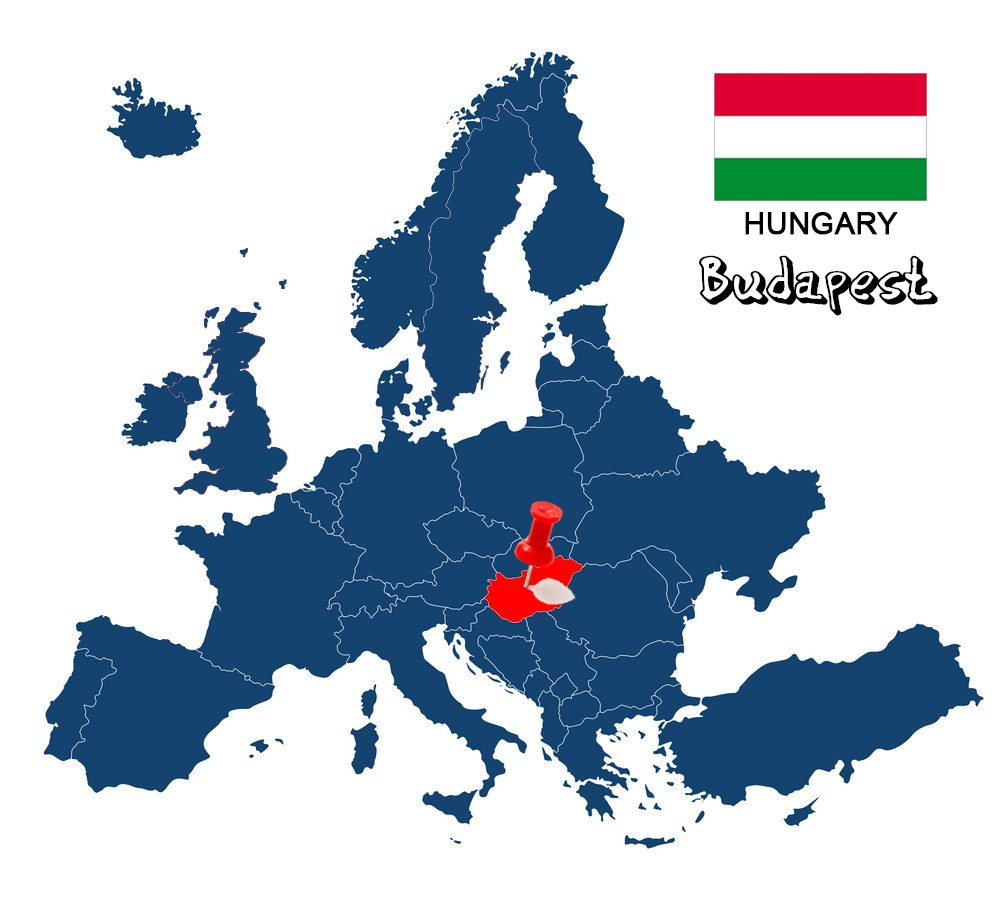
Without a second thought, Budapest is the most attractive city in Europe at night. All its significant buildings are illuminated, creating a sense of romance that, like it, you will hardly meet again. It harmoniously combines the old with the new and offers unique experiences for every traveler. Dozens of attractions, diving in the hot springs of the city, boating on the Danube, delicious Hungarian delicacies, as well as much more waiting to be discovered.
A few words about the city
Budapest is the capital and largest city of Hungary, as well as the county seat of Pest. It is located in the center of the Pannonian Plain and is the seventh largest city in the European Union (not counting the suburbs and in general the metropolitan area of the cities), with 1.7 million inhabitants. Its name came from the merger of Buda and Pest in 1873, creating a single town occupying the two banks of the Danube. Buda is the Western (left) Bank, with a high hill on top of which stands Buda Castle, while Pest is the relatively flat eastern (right) Bank, with its Parliament and many other impressive buildings, as well as busy streets preserving all the architectural heritage of the 19th century. In 1987 Budapest was added to the UNESCO Heritage Sites for the cultural and architectural significance of the banks of the Danube, the Buda Castle Quarter and Andrassy Avenue. Due to its extremely picturesque environment and architecture, it is known as "the Paris of the East", which is also evidenced by the fact that it attracts 4.3 million tourists annually! So I have chosen for you, what I consider to be worthy of attention for one who is visiting the city for the first time.
Országház
The symbol of the city is none other than the Hungarian Parliament (Országház). It is located on the banks of the Danube on the Pest side and is the second largest in Europe, after the British one. It was constructed between 1885 and 1902 in a neogothic style, inspired, οf course, by the London Parliament. The building is 268m long and 118m wide, adorned with a dome 61m high, and has 691 halls! A reasonable question is how such a small country has such a large Parliament. The answer is simple, since it was built to serve the needs of the Austro-Hungarian monarchy, thus essentially two countries. In the evening the building is even more impressive, as it is illuminated whole and its effigy is reflected in the river. To admire it better you will need to go through the opposite bank or take a cruise, with the dozens of ships that are on the docks. Ultimately, there is the misconception that it is not worth getting into its interior. I can't understand how or where this started, but it has to change. The interior of the Parliament House is as impressive as the exterior and is definitely worth a visit. The entrance costs 3500 HU, that is about 10e and includes a private tour, with a person of Parliament in the language you wish (no Greek). It is advisable to pre-book and book your tickets online, as they usually sell out weeks in advance.
Gellért Hegy
On the Buda side, the first stop should undoubtedly be made on the Gellért Hill (Gellért Hegy), which rises majestically above the Danube, offering visitors a panoramic view of the city. The climb is not difficult, but it is certainly demanding, so prepare properly with comfortable shoes and plenty of water.
The hill owes its name to Bishop Gellert, who spread Christianity in Hungary. According to the legend, after the death of St. Stephen, the Christian King of Hungary, the rebel pagan Magyars sealed Gellert inside a barrel and threw him off the hillside.
At the top of the hill, there is a fortress built by the Hungarians of Austria between 1850-1854, with the aim of controlling the city after the suspension of the Hungarian Revolution for independence. There is still the Statue of Liberty, erected by the Soviets for the liberation of the city from the Nazis, and a cave, which since 1926 has been used as a church.

Budavári Palota
Although Budapest has many attractions, the Buda Castle (Budavári Palota) will always be one of the most important, as it is the place where the city was founded. The history of the castle is long and turbulent, since it has been besieged, more or less, 31 times!
It was initially built in the 13th century, after the invasions of the Mongol tribes in Hungary. The King Bela IV almost seeing the leveling of the area, ordered the construction of fortified stone walls in 1243 and around the fortress a compact community called Buddha was created. During the reign of Laius the Great, a palace was built, which was demolished during the Turkish era and rebuilt between 1714 and 1723 by King Charles III of Hapsburg. This did not last long, as much of it was destroyed in 1810 during the Hungarian Revolution. After the Austro-Hungarian Compromise of 1867, there was a need for a new castle in Budapest to express Hungary's independence. A new wing and a central dome were added to the buildings to the left of that of Charles III and Maria Theresa. However, at the end of World War II, the complex was hit again, this time by fire, but after the restoration that began in the 50's, the Castle of the Buddha returned to all its glory. The Castle has 203 rooms and today houses various museums, including the Budapest Historical Museum (Budapesti Történeti Múzeum) and the National Gallery (Magyar Nemzeti Galéria). The National Gallery is one of the most interesting museums in the city, hosting works by Rodin, Monet, Gauguin and our D. Theotokopoulos. The entrance costs 2800HUF (ie about 8.5e).
In addition, the cable car of 1870 that goes up to the castle is beautiful and picturesque, but it is unnecessary and expensive (it costs about 5,5e), since there are free escalators a little further, while the ascent on foot is pleasant. Finally, Buda Castle is illuminated in the evening, so it is definitely worth seeing in the night hours, when it emits a completely diverse character.
Halászbástya
In the wider area of the castle, we find the Fisherman's Bastion (Halászbástya), which for many offers the best view of Budapest. From the top of the turret, you can see up to Margaret Island, as well as the most important buildings of the city such as the Basilica of St. Stephen, the Parliament, the Academy of Sciences and many more. It is said that its name was given by the old fish market, which existed there during the Middle Ages. This bastion was built in 1905 for decorative purposes combining the Neo-Gothic with the Neo-Roman style and consists of seven towers, each symbolizing one of the seven tribes of the Magyars, who came to Hungary in 1896. Many describe the building as fairytale; its construction brings to mind the castles of the tales of Cinderella or the sleeping beauty. During the day the entrance is charged (1000HUF, ie about 3.5e), but after sunset the view of the illuminated Budapest is free.
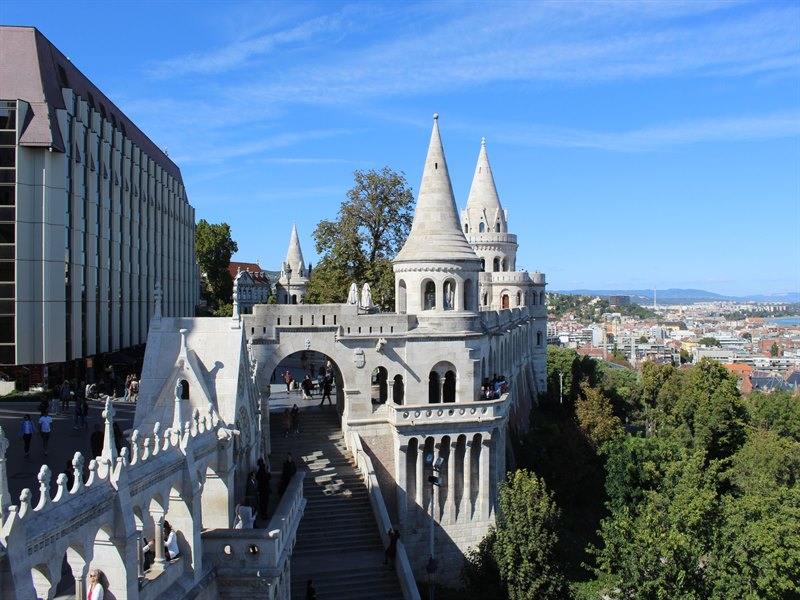
Mátyás Templom
At the Fisherman's Bastion is the impressive Temple of Matthew (Mátyás Templom). This church is also known by the nickname "the Church of the Lady" and was originally built in the 13th century, and since then has changed several times depending on the architectural style of the time. The church took its name from King Matthew, who ruled from 1458-1490 and was a well-known patron of the arts and enlightenment. In 1541, when the Turks occupied Buddha, the temple was turned into a mosque and the ecclesiastical treasures were sent by the Ottomans to Bratislava, while they altered or covered the mosaics that adorned the interior of the church. After the departure of the Turks in 1686, local architects and masons tried to restore the church in the popular Baroque style of the time. At the end of the 19th century, the architect Fringes Schylek restored the church of St. Matthew in its original glory. Schylek recovered the original plans of the 13th century temple and restored many of the gothic elements that had been lost for centuries, which visitors can now admire. The temple has remained for centuries the place for enthronements and the largest ceremonies in the country. The entrance to the temple costs 1800HUF (ie about 3.5e), while if you want to climb the temple tower, you will have to pay more.
Szent Instván Bazilika
The largest and most impressive church in Budapest, however, is the Basilica of St. Stephen (Szent Instván Bazilika), which is moreover the largest in the whole country. It took 50 years to build and although it is not of royal style, its huge size has given it that designation. Construction began in 1851 with the first architect and designer being Joseph Hill, who tried to give a classical style, however he died during the erection. Then the construction was undertaken by Michel Ybl, who followed a neo-Renaissance style. The collapse of the Dome in 1868 significantly delayed the project, as did the death of the second architect. The interior of the church and the completion of the work in 1905 were eventually done by a third architect, Joseph Kraus. Kraus invited the most famous sculptors of Hungary to adorn the interior of the church, who used over 50 types of marble for the chapels and for the many statues of the temple, such as that of the patron of the church, who was the first Christian king of Hungary. In order to be able to place the statue in the sanctuary, special permission was requested from the pope, while in the chapel of the temple there is also preserved the right hand of the Saint! During the World War II, the valuable documents and relics of great value were kept in the temple, because they considered it the only building that could withstand a possible bombardment! Finally, in the bell tower you can see the largest bell of the country weighing 9 tons. Admission to the basilica is free.
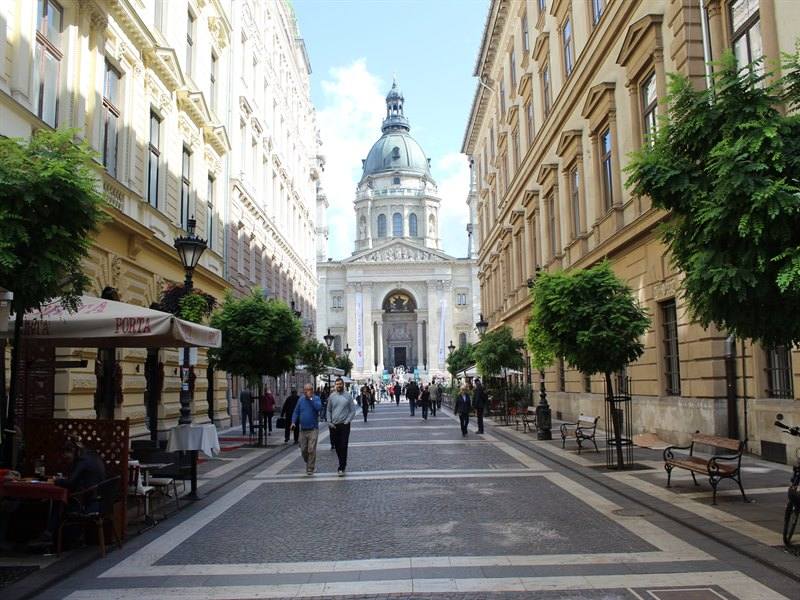
Nagy Zsinagoga
The Grand Synagogue (Nagy Zsinagoga) is the largest synagogue in Europe and the second largest in the world. It is located in the charming Jewish quarter of Budapest and more specifically on Dohány Street. It was built between 1854-1859 in Moorish style, with strong oriental elements, as well as Byzantine, Renaissance and Gothic references. Its exterior is extremely impressive, as it is decorated with hundreds of colored bricks, while its interior is not devoid of beauty. The building is 53 meters long and consists of three large corridors with seats for more than 3,000 people! Next to the synagogue is the Jewish Museum (Magyar Zsidó Múzeum és Levéltár) with many historical, religious and cultural objects, as well as the Holocaust Memorial. Admission costs 5,500HUF (ie about 16e).
Széchenyi lánchíd
The most notable, oldest and certainly most impressive of the eight bridges connecting Buddha with Pest is the famous "Chain Bridge" or Széchenyi lánchíd, as it is commonly called. The bridge was named Sjecheny Lanchid in honor of Count Sjecheny, who took the initiative to build the bridge. It is 375 meters long and 16 meters wide, and its construction was completed on November 20, 1849. The arch triggered an economic renaissance that would lead to the golden age of Budapest and was one of the main reasons that made the provincial cities of Pest and of the Buddha to be transformed into a rapidly growing metropolis. In 1889 the inhabitants demonstrated on the chained bridge for freedom and independence, and since then the bridge has become a symbol of Hungarian freedom. When night falls and the city lights come on, the Chain Bridge adorns the Danube like a glowing necklace.
The other bridges connecting the two sides are the Margaret Bridge (Margit Híd), the Elisabeth Bridge (Erzsébet híd), the Freedom Bridge (Szabadság híd), the Arpad Bridge (Árpád híd), the Petőfi Híd Bridge and the Rakoschi Bridge (Rákóczi Híd).
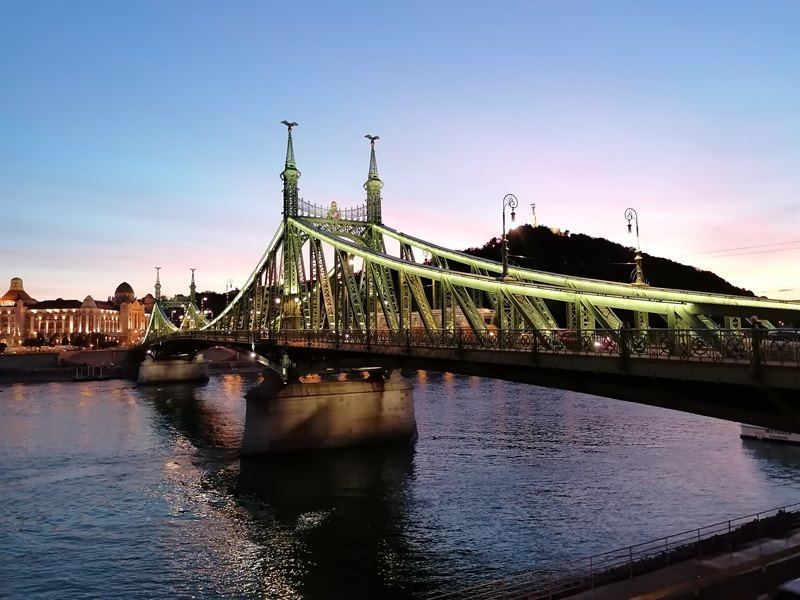
Hősök tere
Every large city that respects itself has a square of historical significance. For Budapest this is the Heroes Square (Hősők tere). It is located in the northern part of the city, at the end of the impressive Andrássy Avenue and was constructed in honor of the great heroes of Hungarian history in 1896, while its center is adorned with the "Millennium Monument". It is this part of the town that gives Budapest the nickname "Paris of the North", as it is particularly similar to the Champs Elysees in the French capital. Below the square and along Andrássy Avenue passes the historic Millennium Metro line in Budapest, which is the second oldest in Europe! Both Andrássy Avenue and Heroes Square have been inscribed on the UNESCO World Heritage List.
To the right of the square is the Műcsarnok Art Gallery and to the left the Szépművészeti Múzeum. The first one hosts contemporary art exhibitions and the entrance costs 1300HUF (ie about 4e). The collection of the second museum consists of international art (except Hungarian), including all periods of European art and includes more than 100,000 masterpieces. The entrance costs 3200HUF (ie about 9.5e).
Plus, the Heroes Square serve as the "main gate" for the City Park (Városliget). In this urban park you will find, in addition to an artificial lake and plenty of greenery, a number of important attractions including the Zoo and the Botanical Garden (Fővárosi Állat- és Növénykert), the "Széchenyi" Thermal Baths (which will be mentioned immediately below), the Hungarian Museum of Technology and Transport (Közlekedési Múzeum), the historic Gundel restaurant and of course the Vaidahunyad Castle (Vajdahunyad vára).
This beautiful castle (with the difficult name) was erected in 1896 to celebrate 1000 years of Hungarian history, since the Hungarian conquest of the Carpathian Basin in 895. It was designed by the architect Ignác Alpár in order to present various monumental buildings from various parts of the Kingdom of Hungary and as it is understood its architectural style is like Babel. Romanesque, Gothic, Renaissance and baroque architectural styles are entangled in one striking effect. Today the castle houses the Museum of Hungarian agriculture, the largest agriculture Museum in Europe.
Széchenyi-gyógyfürdő
A trip to Budapest cannot be considered complete without a visit to one of the city's baths. The components of water are particularly therapeutic in degenerative diseases of the joints, in inflammations as well as in orthopedic problems and post-traumatic treatments. The healing value of the gushing waters of Budapest was realized by the Romans centuries ago, but only after the Ottomans conquered the area, a culture of bathing and mass water was created. With the average water temperature not falling below 27-30 degrees Celsius, in their coldest version, the Budapest thermal baths are an experience that you should definitely give yourself as a gift!
The largest and most famous are without a doubt the Széchenyi Baths (Széchenyi-gyógyfürdő). They are housed in a huge building complex-palace, in neo-baroque style and are definitely the most popular choice of visitors, who usually flood them, resulting in long queues during peak hours, so I suggest you either go early in the morning or book online. Paying the entrance fee, which costs 5500 only for a closet or 6000 for a private cabin (approximately 16 and 18e respectively), you will get your bracelet, with which you will have unlimited access to the 18 outdoor and indoor pools and baths, as well as the sauna and hammam rooms. For an additional fee, you can enjoy massage, aromatherapy and body and face care services alone or as a couple. However, the highlight of these baths is the large outdoor pool at a temperature of 38 degrees, especially in winter when it is literally steaming!
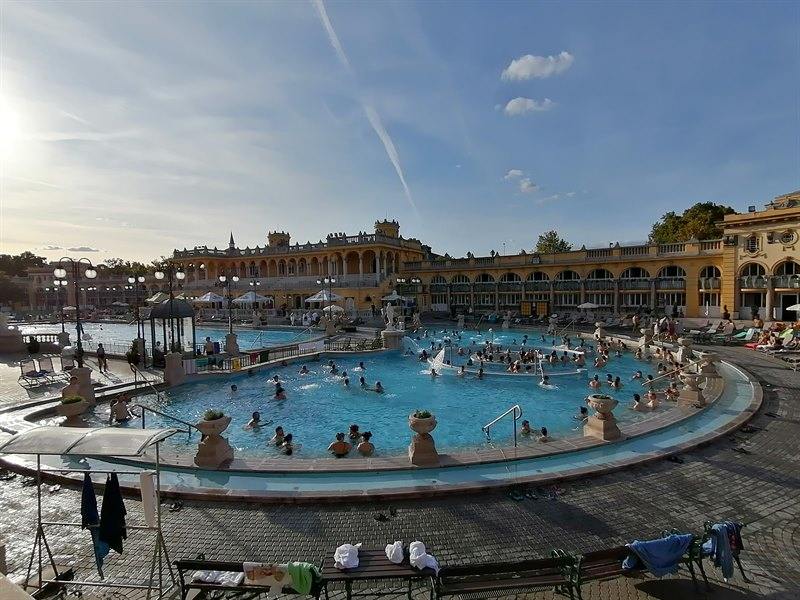
The second most popular are the baths, hosted on the site of the Gellert hotel (Gellért fürdő). They are located in a very central part of the city, more specifically at the foot of Gellert Hill, just opposite the Central Market and next to the Freedom Bridge on the Buddha side, so they are easily accessible on foot. They have 100 years of operation and are built in Art Nouveau style, impressing with their architecture and grandeur. Admission here costs 6000HUF (ie about 19e).
Margitsziget
The island of Margaret (Margitsziget) is located on the northwestern border of the city and was named after Princess Margaret, daughter of King Bella IV who vowed to settle there, in case the Mongol invasion of the country was repulsed, as well as done. It is 3 km long and 500 meters wide and is one of the most popular recreational places for the people of Budapest. It was created by many dry lands that came together over time and was already inhabited since Roman times! From 1869 this island was open to the public, and visiting it is a popular choice, especially during the summer months. So today, it is a large green park without roads and cars and from April to October you can take beautiful walks or bike rides, while on its west bank is home to the Palatinus beach bath complex (Palatinus Gyógy). Also notable are the Centennial Monument from the association, the Aqueduct (Margitszigeti Víztorony), which is a UNESCO World Heritage Site and the Bodor Fountain (Margitszigeti szökőkút).
Váci utca
Váci utca is one of the main pedestrian highways and perhaps the most famous street in Budapest. There you will find a variety of shops with tourist items, restaurants, bars, cafes, as well as all the world-class fashion houses. This particular pedestrian street is suitable for walking, but it would be good to avoid sitting there for food or drink, as it is the most touristic street in the city, resulting in low quality and high prices. Furthermore, many experts (mainly women) lurk, who attract tourists to the bars, ordering expensive drinks and then let them pay for them.
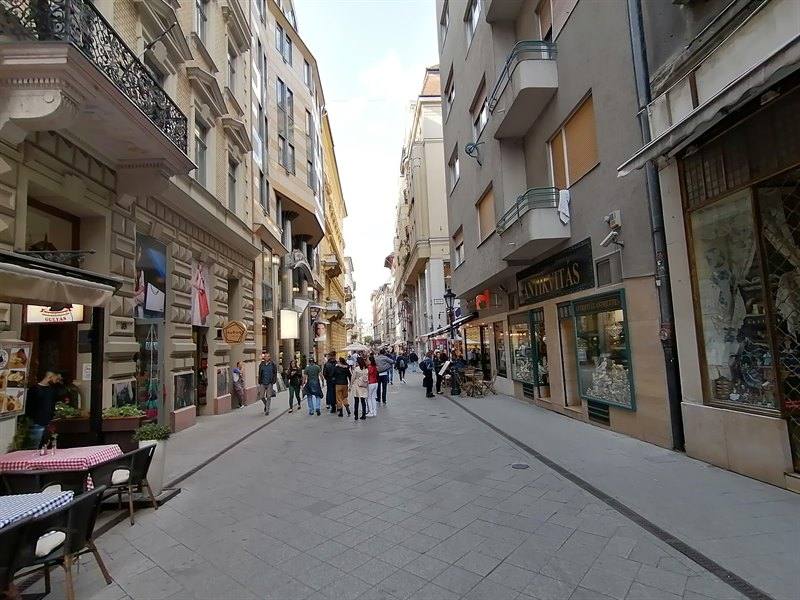
Terror Háza
The House of Terror (Terror Háza) is the most controversial, but at the same time the most interesting museum in Budapest. It was inaugurated in 2002 and is housed in an impressive tenth-century building dedicated to the "victims of terror" who were tortured during the Nazi and Communist dictatorships. In fact, entering you will see them all on an enormous wall with a photo and name. In an evocative atmosphere with music, live narratives, audio documents, photographs and printed material, you will learn everything about this period of the story, from the protagonists themselves. Part of the tour is a tour of the cold offices, the sunless cells, the suffocating places of torture and the walls made of "soap". As I mentioned above, however, the horror museum was considered controversial by Hungarian society, because most of the exhibition is dedicated to the experience of communism, while a much smaller part focuses on the Nazi period. For me, however, it is worth a visit. The entrance costs 3000HUF (ie about 9e).
Ruin Bars
Yes, I know very well that the famous Ruin Bars of the Hungarian capital are not attractions, but it’s unbelievable to travel to Budapest and not have a drink there. These are bars, housed in old, dilapidated and half-ruined buildings, which have been decorated and rebuilt; now being the most "modern" in the nightlife of the city. Most are located in the Jewish quarter, which was deserted after World War II and are suffocatingly full, every day of the week. The most famous of these Ruin Bars is called Szimpla Kert and consists of dozens of rooms, each of which is a different shop, with a unique style and different music. To be completely honest, I believe that in this you will not meet locals, since due to its reputation it has become a must for every tourist, but it is definitely an experience in itself.
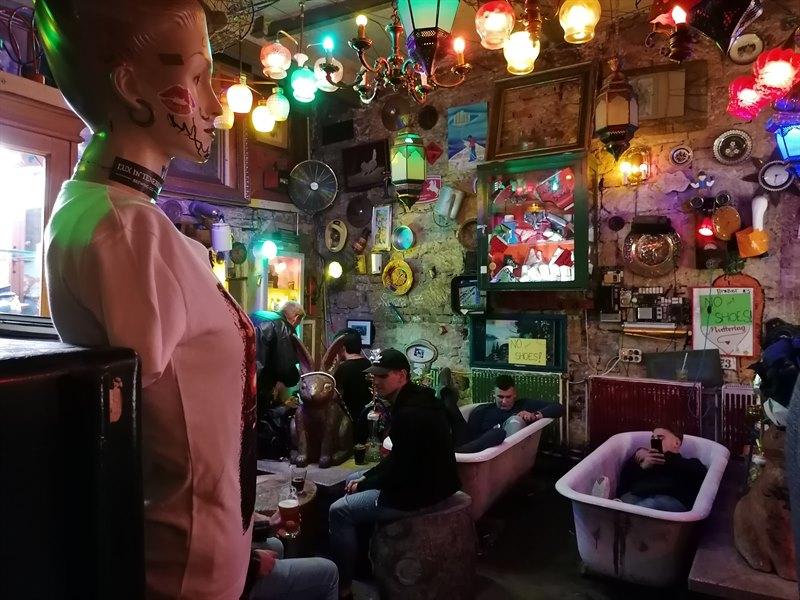
How to go
Thessaloniki is connected by air with Budapest and Budapest Ferenc Liszt International Airport, with many airlines. Ryanair offers the most economical option, where with proper planning one can find tickets starting from 28 € round trip! Also, if you want a more comfortable flight, you can choose a combined flight with Austrian, with a stopover in Vienna, which with proper planning can find tickets starting from 159e!
Where to stay
Budapest is one of the top travel destinations in Europe, with demand high all season, but prices remain at normal levels. Most attractions and generally the most interesting things are concentrated on the Pest side, so I would recommend looking for some accommodation on the right side of the river. As an economical option I have to recommend the easyHotel Budapest Oktogon, a "hotel" of the homonymous airline that offers perhaps less than expected, but at a very good price and in a very good location, just a few meters from the historic center. If you are looking for something more sophisticated, then a good solution is the Ambra Hotel, a four star hotel, which offers all the necessary amenities to the visitor. Finally, if you want to experience the city as "local", I recommend trying the "cozy" Andra’s apartment.
How to move
Budapest is a city that is pleasant and easy to walk to, so if you choose to stay in central Pest you will be within walking distance of most points of interest. In any case, the city has an excellent system of public transport with metro, tram, buses, trolleybuses and suburban trains, which will transport you to any part of the city quickly and efficiently. Being one of the oldest subways in Europe, the Budapest metro does not exude abandonment or lack of cleanliness, but a traditional vintage feel. The ticket control system is very strict with inspectors on almost every route, so before entering the metro or bus make sure you have bought and canceled your ticket at the machine, which costs 350 forints (almost one euro) for each route. If you intend to use public transport enough, then it is in your interest to issue the Budapest Card, which with 22e you will have unlimited travel in all public transport. Also, taxis are quite economical, but be careful as there are many races without a yellow license plate, a company name (brand) on the side doors and the fares on the dashboard, which may cost you more. Finally, in Budapest there are bike lanes everywhere and on almost every corner bicycles and skates for rent. So if the weather is nice, it's another way to get around the city.
What to eat
The national cuisine of Hungary has European, Middle Eastern, Asian elements and a lot, but very much, paprika. It is considered one of the "heaviest" cuisines in Europe, with its boiled dishes being the most famous, as Goulash. The Hungarian national dish is essentially something between a soup and a stew. It is a slow-cooked beef, cooked with carrots, onions and plenty of spicy paprika. You will find it literally everywhere, from the last tiny cafe to the luxurious restaurants. But you will taste the best Goulash in a really original store, the For Sale Pub. It is located directly opposite the Central Market (Nagy Vásárcsarnok), which by the way is worth a visit and makes an impression at first glance. The floor is covered with straw and shells of peanuts, the ceiling and the walls are full of papers with dedications, while the lighting is low, since it is mainly lit by candles.
Many dishes in Hungary are also fried, which explains the smell of fried oil in most places. A delicacy you should not miss is the Langos. Think of something like fried bread, which is undoubtedly the most popular snack of the locals for their tithe meal. It is dough fried in oil, garnished with sour cream and grated cheese. You will find it with garlic, but also without garlic. You will taste the best at Retro Langos-Arany Janos Metro Station.
Another dish that Hungarians are proud of is chicken (or duck) with plenty of paprika. It is cooked with onions, garlic, tomatoes and a strong spoon of sour cream, while it is served with nokedli (a type of egg pasta). This dish, as well as other traditional ones can be tried at Sir Lancelot Knights Restaurant. Apart from the excellent flavors and the huge portions, the visit here is in itself an experience. The place looks like a castle, the waiters are dressed as knights, the utensils look like centuries and most importantly… you eat with your hands!
From sweets of course you should try the Kurtoskalacs or as I call them chimney cakes. It is a hollow cake, sprinkled with sugar and baked on the coals. The dough is wrapped around a cylindrical utensil and baked on it, while in many cases it is sprinkled with cinnamon and chopped walnuts. You can find them in many canteens on the street, but the most delicious ones can be found at Molnar’s Kurtoskalacs, on Vaci Utca.
Finally, for breakfast or brunch I recommend Cirkusz and Spot, for coffee and dessert the New York Café, which has been voted the most beautiful cafe in the world and if you want to get away from the local flavors and want a burger, then try the Deep Burger.
Useful information

In Hungary we travel with a passport or a new type of Police ID, where the details are indicated in Latin characters.
In Budapest the language used is, of course, Hungarian. But the majority (mostly young people), speak English, so ask for clarifications in English.
The currency of the country is the Hungarian forint, and its exchange rate at the moment is 1€ = 327.79 HUF. Most shops also accept euro, but you will definitely lose at the exchange rate.
Budapest is an hour behind Greece (GMT +2).
The Greek Embassy in Budapest is located on Szegfu U Street.3, VI and her phone is + 361 4132610.
Getting to and from Budapest Airport is simple, since there are continuous bus routes (100E and 200E), running routes from there to the Metro terminal and the city center.
The climate of Budapest is Oceanic, which means, that it has mild, wet winters, warm, dry summers and enough precipitation. But because of the river there is terrible humidity, which makes the cold in the winter months almost intolerable. So ideal visiting period is autumn or spring.
Recommended trips → Esztergom, Visegrad, Sententre, Bratislava

If this article seemed interesting or contributed to your quality information, then you can like my facebook page: o_thessalonikios or follow me on instagram!
Mouzakidis Pantelis








